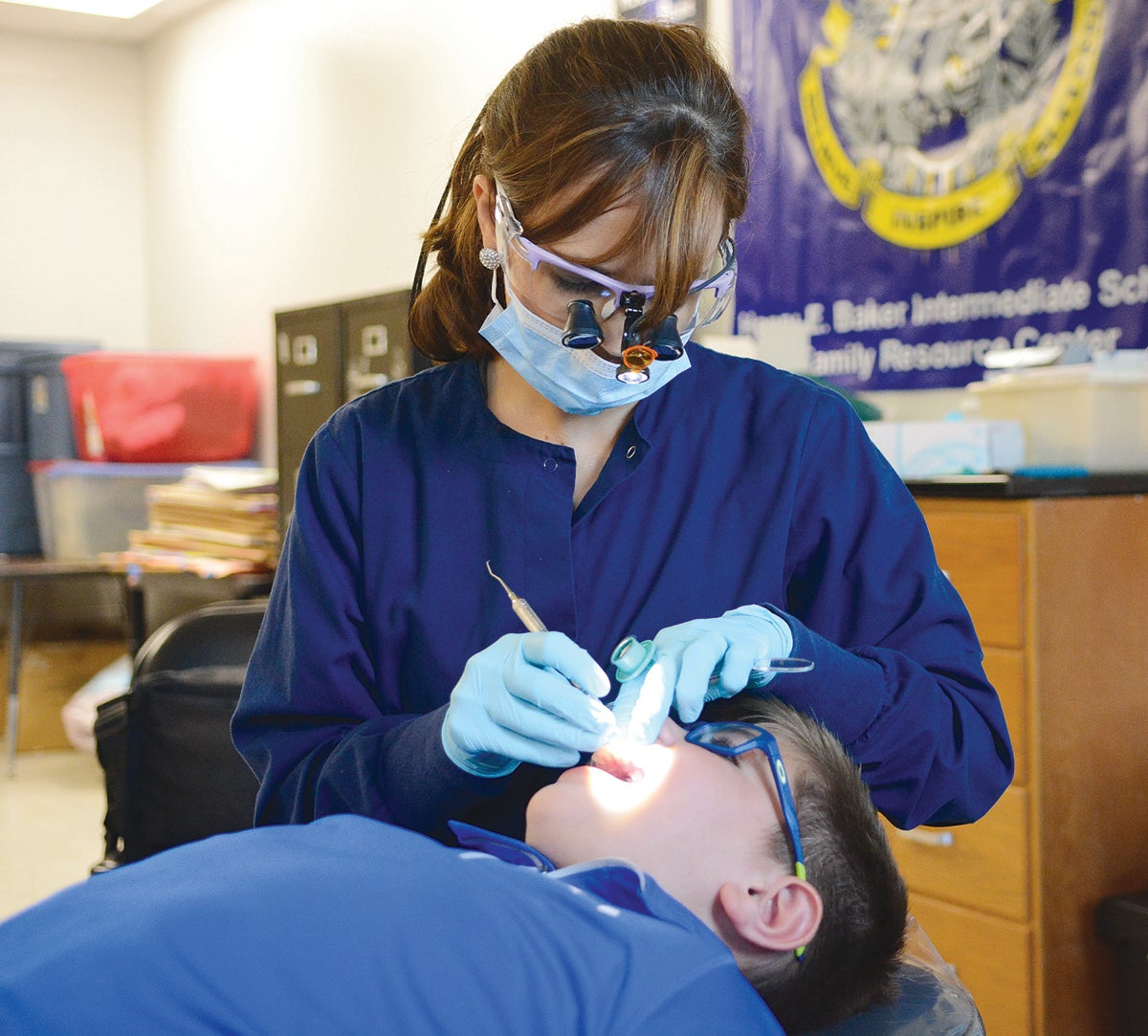Health department provides dental cleaning to Clark students
Published 10:39 am Friday, September 29, 2017

- Brandi Bush cleans Paxton Harper's teeth Thursday as part of the Clark County Health Department's Bright Smiles program. Bush and Francisca Carrizales visit each school in the district and look at student's teeth free of charge. (Photo by Seth Littrell)
Brandi Bush and Francisca Carrizales will see about 20 patients a day every weekday for the next three weeks, using a makeshift office in the corner of Baker Intermediate School’s Family Resource Center.
The two are dental hygienists working for the Clark County Health Department, and their mission is to give free dental care to as many students in the district as possible and help them find a permanent dental home.
“We started in 2015 as a pilot for a dental hygiene program,” Bush said. “Not all health departments have one, we were the first in Clark County.”
The program allows any family in the school system to get their student a free cleaning and dental examination. At the beginning of the school year students and their parents or guardians receive a back to school packet from the district. That packet includes a form to sign up for the screening.
Bush and Carrizales then visit each school in the district, with the exception of the Clark County Preschool, to individually meet with the students who have signed up.
“The first year we saw about 900 kids,” Bush said. “Now it has doubled to about 1,800.”
As part of the screening, students get an examination, a cleaning, dental sealants over cavity prone areas, a fluoride varnish to help prevent future cavities, oral hygiene instructions and a report card including follow-up information.
The whole process takes about 10 minutes, meaning the student is able to return to class with minimal interruption.
Bush said many of the students the pair sees have good oral hygiene practices or regularly see a dentist. However, she said it isn’t uncommon to see a child who needs immediate attention for a dental problem.
“Once we saw six abscesses in one day,” Carrizales said.
When situations like this are found, Carrizales and Bush send a note home with the student and then give a follow-up call to their parent with information and resources on how to treat the problem.
Bush said the program has been more popular among young students than it has with older ones. However, some of the students who first saw the two in 2015 are continuing to come back year after year, something they said was a positive indicator.
“If we can get the next generation thinking more about dental hygiene, maybe we can avoid some of the problems this generation has seen,” she said.





